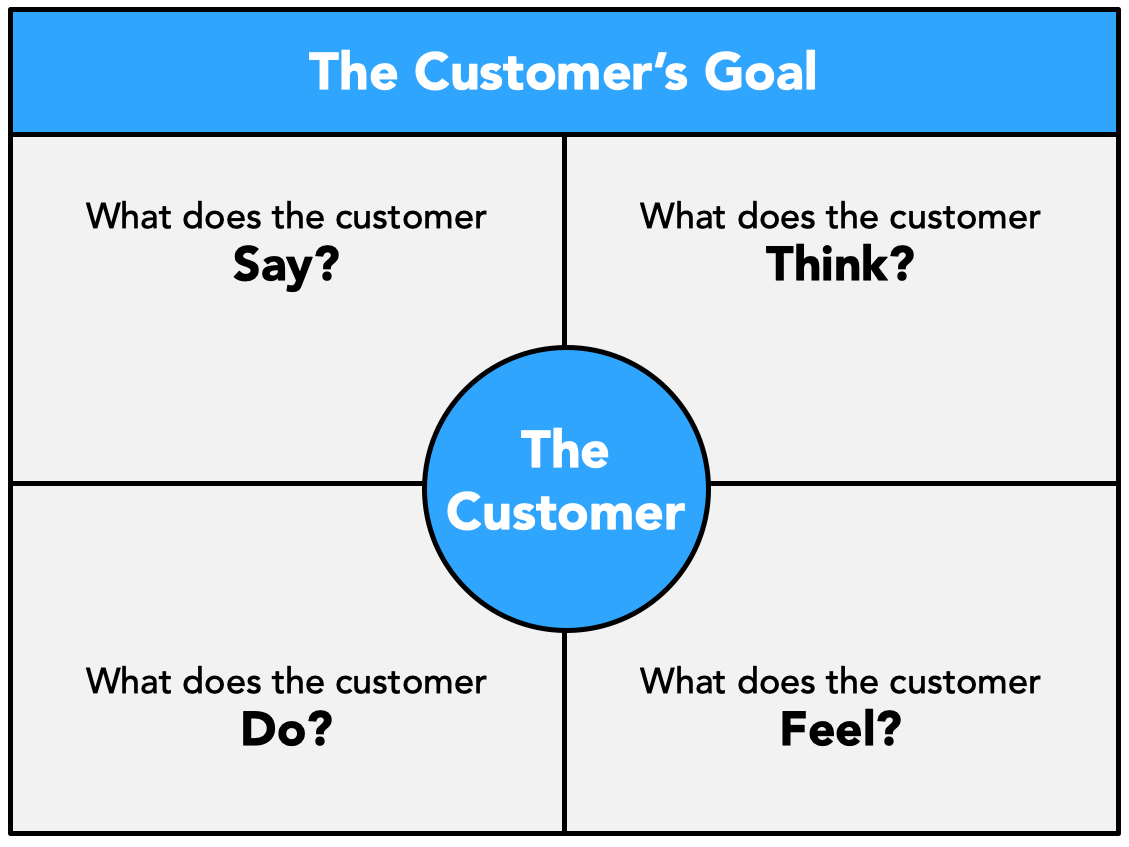Description
The purpose of an Empathy Map is to help teams develop empathy for and a shared understanding of people relative to a goal. For marketers, Empathy Maps are used as a way to organize qualitative research and knowledge about a particular target customer or persona. Empathy Maps are typically created collaboratively as a team to synthesize various observations and generate a shared understanding of the people the brand is trying to target and serve. To eliminate bias or assumptions, Empathy Maps should be created using actual customer research such as customer interviews and surveys. Once completed, Empathy Maps can be used by marketers for various purposes including designing new customer experiences and generating new product ideas.
Questions
The Empathy Map helps to answer marketing questions like:
What would our target customer think about this?
What is our customer doing to accomplish this?
What is our customer thinking or feeling about this?
Steps
Gather all available research and data related to the target customer. If you are developing the Empathy Map during a workshop, ensure that all participants come prepared.
Define the specific target customer or persona that the Empathy Map is based on. Provide enough detail so you and other workshop participants understand who you are empathizing with.
Describe the goal of the target customer or persona to provide context for the Empathy Map. Write a single line describing what the customer is trying to accomplish in their own words.
Capture all of your observations about the person and their goal in the corresponding quadrants. Write down the observations in the first-person voice of the person whenever possible.
Review the observations to see what is common and group together, then look for observations that may be contradictory and try to resolve. Identify and discuss any new or unexpected insights.
Considerations
Empathy Map can be considered living documents and be updated with new research over time.
When reviewing a completed Empathy Map, look for gaps or questions that require additional research.
Empathy Maps are intended to complement, not replace customer personas and target audience profiles.
References
The Empathy Map was developed by Scott Mathews of XPLANE.

